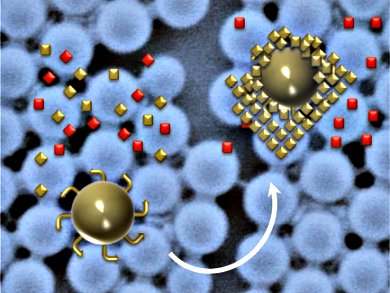Yitzhak Mastai, Bar-Ilan University, Ramat-Gan, Israel, and Rafael Muñoz-Espí, Max Planck Institute for Polymer Research, Mainz, Germany, and colleagues have developed a simple method to prepare chiral polymer nanoparticles based on amino acids by miniemulsion polymerization. First, the optically active amino acid monomers were prepared by an Einhorn modification of a Schotten–Baumann reaction. Then, the monomers were dissolved in toluene and polymerized in miniemulsion. The size of the obtained chiral polymer particles ranged from 150 to 260 nm, as determined by dynamic light scattering (DLS).
The team found that the chiral polymer nanoparticles serve as nucleating agents for the enantioselective crystallization of racemic mixtures of amino acids. Isothermal titration calorimetry (ITC) was used to measure the adsorption energy of the enantiomers onto the surface of chiral polymeric nanoparticles and proved their enantiospecificity.
The synthesized chiral nanoparticles are suited for the development of enantioselective processes and also contribute to a better understanding of the chiral recognition on polymer surfaces.
- Amino-Acid-Based Chiral Nanoparticles for Enantioselective Crystallization,
Laura C. Preiss, Liora Werber, Viktor Fischer, Sadaf Hanif, Katharina Landfester, Yitzhak Mastai, Rafael Muñoz-Espí,
Adv. Mater. 2015.
DOI: 10.1002/adma.201405531




